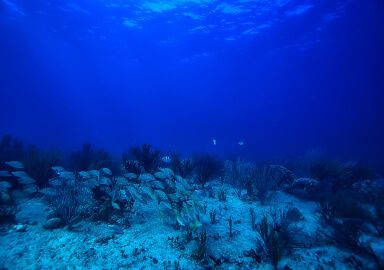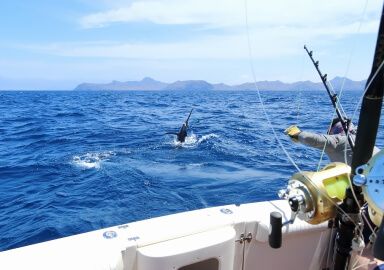Gray Snapper
Gray snappers are coastal marine predators of the western Atlantic, that can bite in more ways than one!
View 5 listings
5
listings
–
price starting from
4
countries
Where and When?
The true gray snapper has a limited distribution in the western Atlantic Ocean from Massachusetts in the north, around the coastline into the Gulf of Mexico and the whole of the Caribbean Sea. They are also found offshore around islands such as Bermuda and the Bahamas. Reports of the species reaching Brazil seem to be based on misidentification. They are used in fish farming in the Far East and escapes must take place.
About Gray Snapper
The gray, or mangrove snapper (Lutjanus griseus), is renowned for its fighting abilities and good taste. The species has a typically snapper-shaped body, robust and elongate but streamlined. Most specimens are reddish or grey with vertical mottling, but colours can change rapidly and specimens in separate areas are often of different colours. The eyes are large, and the mouth is also big and armed with an impressive array of hard, sharp teeth including much longer canine teeth that can give an unwary angler a nasty bite.
There is no obvious sexual dimorphism, and the species can attain 89 cm. (35 in.) and a mass of 20 kg. (44 lbs.). They feed voraciously on anything they can swallow including fish, crabs, shrimps and squid. They grow rapidly at first, but soon slow down and the oldest fish recorded was 21 years old. Gray snapper often form shoals of different sized individuals, except for around spawning, when similar-sized fish come together in mid-summer, usually during a full moon, to spawn. No large-scale migrations are known, but local movements northwards in summer have been noted.
Gray snapper are mostly an inshore species and are tolerant of brackish and even fresh water. In Florida they are often found in freshwater areas attached to the ocean. They strongly prefer to be near almost any structure, big or small. Young, particularly, are associated with shallows, often mangrove areas, and as they grow, they progressively move into deeper waters. Depth preferences are given as 5-180 m. (16-591 ft.), and they are most often found well above the 50 m (164 ft.) submarine contour.
Gray snappers feed all year round, especially in the warmer areas, but are mostly nocturnal feeders. This means that daytime fishing is best very early or just before dark.
How to Catch?
Sport fishing for gray snapper is usually carried out from small boats in fairly shallow water or around structures such as reefs. Fishing in estuaries for small gray snapper is a good way to start a sport angler. Young fish take baits well but, as they grow and gain experience, they become harder to catch. Generally, most fish caught are not enormous and, as the species is reputed to be fairly shy and discerning, lightto medium tackle is best. A strong leader, however, is essential due to its very sharp, strong teeth.
Bigger gray snapper are found around reefs, rocks and harbours and also some oil rigs. While fishing can be good in estuaries or from jetties, bank fishing is often difficult as gray snapper are “dirty” fighters and will often head strongly for any structure. Sitting in a boat with a suitable strong tackle allows the angler to try and hold the fish away from its “bolthole” and prevent it from reaching any structure
Most anglers use bait, both live and dead, but artificial lures and even fly are gaining in popularity. The capture of a good gray snapper is a very satisfying experience as you will have outwitted a sly and devious opponent that probably evaded many other anglers.
Listing Types
Similar Species
 Black Snapper
3 offers
Black Snapper
3 offers
 Blackfin Snapper
2 offers
Blackfin Snapper
2 offers
 Cubera Snapper
30 offers
Cubera Snapper
30 offers
 Lane Snapper
14 offers
Lane Snapper
14 offers
 Mangrove Snapper
42 offers
Mangrove Snapper
42 offers
 Mohogany Snapper
1 offer
Mohogany Snapper
1 offer
 Mullet Snapper
6 offers
Mullet Snapper
6 offers
 Mutton Snapper
22 offers
Mutton Snapper
22 offers
 Pink Snapper
2 offers
Pink Snapper
2 offers
 Queen Snapper
6 offers
Queen Snapper
6 offers
 Red Emperor Snapper
7 offers
Red Emperor Snapper
7 offers
 Red Snapper
99 offers
Red Snapper
99 offers
 Short-Tail Red Snapper
1 offer
Short-Tail Red Snapper
1 offer
 Silk Snapper
3 offers
Silk Snapper
3 offers
 Snapper
275 offers
Snapper
275 offers
 Vermilion Snapper
13 offers
Vermilion Snapper
13 offers
 Yellowtail Snapper
24 offers
Yellowtail Snapper
24 offers







